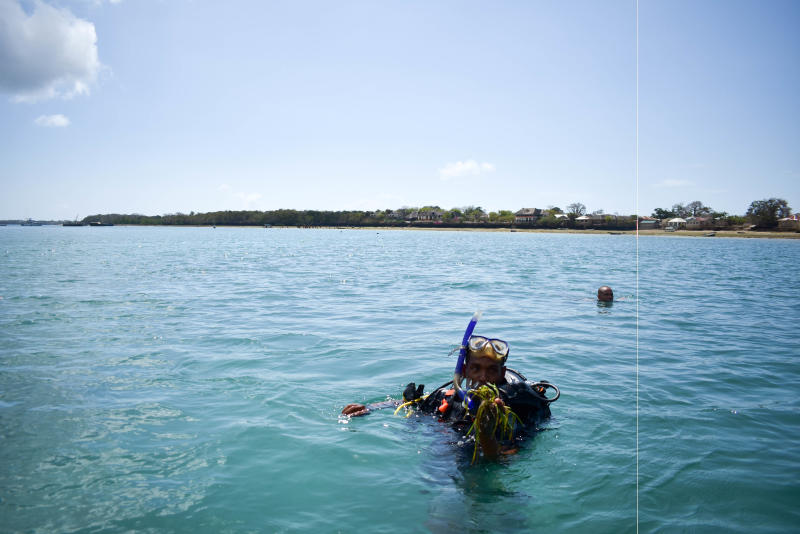A man dives underwater at Wasini Island to inspect restored coral reefs that have revived marine activities in the region. [Robert Menza, Standard]
×
The Standard e-Paper
Kenya’s Boldest Voice

A man dives underwater at Wasini Island to inspect restored coral reefs that have revived marine activities in the region. [Robert Menza, Standard]
Muhammad Musa clasps his paddles, as he rows the dhow deftly. It is so dark that he can only see a few inches ahead. But from his ancestral home in Wasini Island, he knows the way to Shimoni, the mainland town three kilometres away. He has made this night trip many times in the last 20 years.